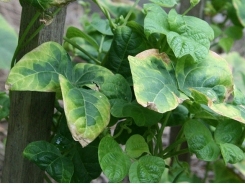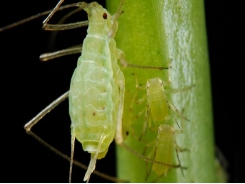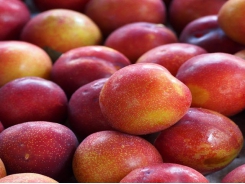Planting Preparations for Growing Tomatoes

Border culture — pre-planting preparations
No chances should be taken with border soil. It is advisable to have some form of analysis carried out, even if it is only a pH and potato cyst eelworm check.
Borders should be cultivated carefully by digging, adding supplies of clean organic matter to condition the soil. Many of the troubles which occur when growing tomatoes in borders emanate not from any specific pest or disease or lack of nutrients but simply because of the poor physical condition of the soil. If good well-rotted farmyard manure is available, this should be used at 50kg per 9m2 (1 cwt per 8 – 10sq yd), provided that the border has not been heat sterilized—this could cause excess nitrogen problems. Peat is especially reliable at 3-5kg (6-10lb per sq yd). Where sphagnum peat is used in quantity for conditioning tomato borders (or growing borders generally) it is wise to add extra lime, ie in addition to that shown to be necessary by soil analysis, generally 3-6 g /litre (4-6oz) per bushel of peat. Organic composts can be used at rates of up to about one-fifth or one-sixth of the soil bulk, although on a long-term basis they can give rise to heavy metal build-up if used to excess from some sources.
Organic gardening enthusiasts will obviously wish to use ‘properly made compost’, and this will invariably result in fruit of excellent quality, although in my experience disease problems can still develop in time, especially if something goes wrong with the compost-making system or rotation programme.
Soluble salt problems
A problem with tomato borders, especially if they are not ‘new’, is the build-up of soluble salts, and flooding may be necessary to flush these salts out. This process should be carried out to the following levels.
Soil analysis will determine the need for flooding or otherwise, it being unnecessary to flood if the salt content falls within the normal level. Flooding should certainly be avoided if possible, as, apart from chilling the border, it can be detrimental to soil structure. In the majority of cases and where previous crops have been grown with adequate water supplies, it will merely be necessary to water the border to ensure that it is sufficiently moist at planting time. Larger quantities of water are best applied in mist form to minimize soil structure damage.
Application of lime
Lime will be necessary to adjust the pH to the 6-6.5 level, and should be lightly forked or watered in after even application. Either ground limestone or magnesian limestone can be used as required by analysis, lacking which information a 270— 340g / m2 (8-10oz per sq yd) application will normally suffice. Direct contact between lime and any farmyard manure applied should be avoided, as ammonia gas may be generated, by digging in the latter before applying lime to the soil.
Application of tomato bases
It is necessary to apply fertilizers as a pre- planting base dressing to provide a ‘bank’ or reserve of nutrients. Owing to differing circumstances, including whether the soil is heat-sterilized, chemically sterilized or new, there are several procedures.
Pre-planting preparations for other cultural systems
Grafted plants are set out in prepared borders, sterilization not normally being carried out unless there is a serious weed problem.
Ring culture
It is usual to take out the border soil, if any exists in the first case, and replace this with a 15-20 cm (6—8in) layer of inert aggregate which can be weathered ash, perlite, granite chips, coarse sand or gravel. This must be inert and free from chemical residues such as the sulphur which would be found in fresh ashes. The aggregrate should be in an even layer with free drainage. The usual ‘ring’ is a whale-hide pot (bituminized paper) or 23cm (9in) diameter with or without a bottom. Plants are potted up in a warm greenhouse and grown on to a certain stage before setting out in the aggregate (if pots have bottoms). Rings are generally spaced out 45-60 cm (20-24in) apart and filled to within 5cm (2in) of the top with the chosen compost, usually John Innes No 2. Soilless media can also be used, although in this case plants will require feeding much earlier than if grown in a good John Innes compost, of which about 5.5g (12lb) per 22.5cm (9in) whalehide will be required.
Polythene bag culture
Large black polythene bags (medium gauge) with drainage holes, holding approximately a quarter of a bushel of a soilless media, are spaced out on top of the border soil on a layer of polythene, or preferably on a layer of free-draining inert aggregate. Bolsters or growbags can also be used, these simply being bags of growing media which have the top sections removed to allow planting, drainage being provided by making slits in the sides of the bags. Boxes of soil are filled in situ at the appropriate distance apart, old wooden apple or orange boxes frequently being used for this purpose on a short-term basis. Trough and trench culture Troughs made up with pegs and wire to a 15-20cm (6 — 8in) depth, or alternatively trenches set in the ground with plastic drainage tiles running through them, were popular for tomato culture in commercial circles, soilless media generally being used. There are many variations on these systems, some of which involve the use of troughs made of concrete or expanded metal; in all cases the necessary criteria are the use of dependable soilless media and outlets for surplus moisture.
Polythene buckets 9-10 litre (2 gallon size) with drainage holes are filled with soilless media, this system being perhaps most successful with lignite or peat/perlite media, or various other aggregates for hydroponic culture.
Peat mattress systems involve the use of whalehide pots on top of a 5-8cm (2-3in) layer of peat in a shallow polythene trough, and Levington compost has been used with some success for this system in recent years. The method, however, has been employed for many years among smaller commercial growers with pest and disease problems. Many growers merely place whalehide pots on top of the existing border soil, a practice which should be attempted only when border soils are not badly ‘diseased’.
Straw bale culture
Deep-seated virus infection or eelworm problems led initially to the development of this system which is based on the old ‘hot bed’ and uses the beneficial aspects of composted straw and the production of carbon dioxide. Wheat straw is preferable to oat or barley straw, as it is harder textured and does not decompose so quickly. Straw bales do, however, take up a lot of room and alternatively 20-25cm (8-10in) wads may be used, particularly where height is limited. Isolation from border soil can be readily effected by laying the bales or wads on a layer of black polythene. A trench can be taken out before laying down the polythene and this can act as a moisture reservoir very effectively. The straw is first of all saturated with water over a period of several days in a greenhouse temperature of about 10°C (50°F), the heating system being put into operation if the weather is cold. After soaking, the fertilizer is added to the bales and flushed in with more water.
Over the years, it has been found that a shorter period and smaller quantities of fertilizer are required for the fermentation process than were once thought necessary. Quantities of fertilizer required to induce fermentation vary with the weight of the bales, but the following average quantities per 50kg (cwt) of straw (2 bales) provide a good guide (pro rata for wads). For each 50kg (cwt) straw apply: 336g (3/4lb) ammonium nitrate-lime (Nitro-Chalk or similar); 170g (6oz) triple superphosphates; 170g (6oz) magnesium sulphate; 170g (6oz) potassium nitrate; 85g (3oz) ferrous sulphate.
Some gardeners still favour the older practice of a longer decomposition period. This involves ammonium nitrate-lime applied at the rate of 675g (1-1/2 lb) per 50kg (cwt) straw after the straw is wet, followed by a further 450g (1lb) per 50kg (cwt) straw in 3-4 days, and followed 3-4 days later by the quantities of fertilizer given above, but reducing the ammonium nitrate-lime to 170g (1/4lb) As an alternative 675g (1-1/2lb) compound fertilizer can be used for the final dressing in addition to the 340g (3/4lb) ammonium nitrate-lime. Copious amounts of water are needed which should be applied through spraylines to thoroughly flush in the fertilizers. Organic gardening enthusiasts invariably turn towards organic fertilizers such as MaxiCrop Tomato Special, which is used on several occasions to ferment the straw. In addition some form of lime should ideally be applied, to prevent tomatoes suffering from calcium deficiency, which will exhibit itself as blossom end rot.
After the full application of the nutrients a shallow ridge of compost (of low nutrient status) is run along the top of the bales. The temperature of the bales in the centre should reach about 43-54°C (10-130°F) and when the temperature drops to about 38°C (100°F) planting can take place, although this is not a vital matter as the plants seem to respond to the heat generated. It is usual to set out three plants per bale, angled and subsequently trained obliquely so that they are not unduly congested, as they will be if planted and trained straight up. It may be found that straw wads do not ferment or heat up as readily as complete bales, and even then fermentation is not always fully achieved.
Có thể bạn quan tâm
Phần mềm

Phối trộn thức ăn chăn nuôi

Pha dung dịch thủy canh

Định mức cho tôm ăn

Phối trộn phân bón NPK

Xác định tỷ lệ tôm sống

Chuyển đổi đơn vị phân bón

Xác định công suất sục khí

Chuyển đổi đơn vị tôm

Tính diện tích nhà kính

Tính thể tích ao hồ




 Fertilising cucurbits for crop success
Fertilising cucurbits for crop success  Pests and Diseases of Tree Fruit - Part…
Pests and Diseases of Tree Fruit - Part…